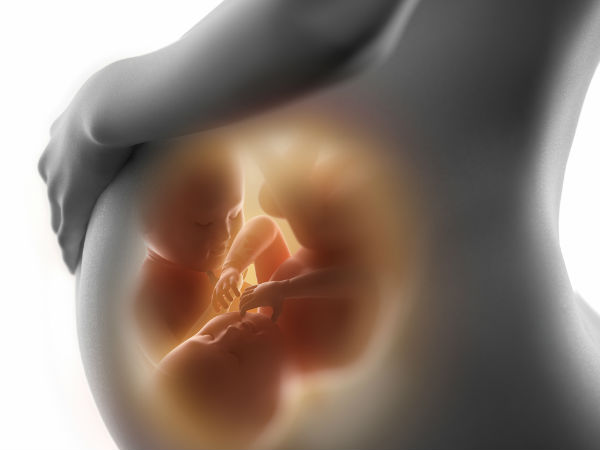Just In
- 6 min ago

- 6 hrs ago

- 7 hrs ago

- 11 hrs ago

Don't Miss
- Movies
 Crew Box Office Collection Day 21: Kareena's Film Barely Sees Growth; Crosses Rs 70 Cr In 3 Weeks
Crew Box Office Collection Day 21: Kareena's Film Barely Sees Growth; Crosses Rs 70 Cr In 3 Weeks - Finance
 8 Tata Group Stocks To Buy That Will Pay Dividends Soon, Q4 In Focus; Are You Invested?
8 Tata Group Stocks To Buy That Will Pay Dividends Soon, Q4 In Focus; Are You Invested? - Sports
 Australia Women Cricketer Ashleigh Gardner gets engaged to partner Monica Wright
Australia Women Cricketer Ashleigh Gardner gets engaged to partner Monica Wright - News
 Iran Embassy In Paris Cordoned Off Following Reports Of Suspect With Explosives
Iran Embassy In Paris Cordoned Off Following Reports Of Suspect With Explosives - Automobiles
 Suzuki Swift Hatchback Scores 4 Star Safety Rating At JNCAP – ADAS, New Engine & More
Suzuki Swift Hatchback Scores 4 Star Safety Rating At JNCAP – ADAS, New Engine & More - Education
 NLSIU Announces the Rajiv K. Luthra Foundation Grant
NLSIU Announces the Rajiv K. Luthra Foundation Grant - Technology
 Dell Introduces AI-Powered Laptops and Mobile Workstations for Enterprises in India
Dell Introduces AI-Powered Laptops and Mobile Workstations for Enterprises in India - Travel
 Journey From Delhi To Ooty: Top Transport Options And Attractions
Journey From Delhi To Ooty: Top Transport Options And Attractions
Twin-to-twin Transfusion Syndrome - Everything you need to know
The biggest joy in the world is when a mother hears that she is giving birth to twins. Isn't it a miracle of nature when there are two babies developing inside the mother's womb? Though having twins may just double up your joy, especially if you are a first-time parent, it can also make matters worse for you. Often, the conception of twins in the womb comes with its own set of complications.
Medically, there are different types of twins, such as monozygotic, which evolve from a single fertilised egg and often give birth to identical twins and dizygotic where two separate eggs are fertilised by two separate sperms. Then there are monochorionic twins who have separate amniotic sacs but share the same placenta. Although the amniotic sacs are separate, they are a risk to each other due to their common placenta.

The placenta is an organ that develops especially during pregnancy. It is the main organ which takes care of the blood and oxygen transfusion happening in the womb. Therefore, a common placenta among the twins leads to one getting more nutrients than the other. This very rare phenomenon is known as twin-to-twin transfusion syndrome or the TTTS. This causes a lot of problems for the developing set of twins. If you want to know more about the condition, read our extensive article on the topic.
What Is Twin-to-twin Transfusion Syndrome?
Twin-to-twin transfusion syndrome is a rare condition which affects a developing set of monochorionic twins. These twins, though they have a different amniotic sac, share the same placenta. Due to this, the blood supply between the twins also gets connected. This may result in the blood passing between the twins as well.
The problem arises due to the fact that the blood sharing volume between the twins is not equal. One twin among the two gets extra blood and other nutrients while the other gets decreased amounts. This puts the lives of both the twins in danger.
Twin-to-twin transfusion syndrome is often referred to as the disease of the placenta. Out of the two twins, the one getting extra blood and oxygen is medically referred to as the recipient and the other one who is devoid of the nutrients is referred to as the donor.
While the recipient gets all the extra blood, it passes more urine than required. This increases the fluid in its amniotic sac and results in an enlarged bladder. It also puts an added pressure on the heart of the twin. On the other hand, decreased blood flow in the donor directly results in the decrease of its amniotic fluid which results in poor foetal growth.

What Are The Symptoms Of Twin-to-twin Transfusion Syndrome?
Twin-to-twin transfusion syndrome can easily be detected by reading the ultrasound scans of the developing twins for the following signs.
-
Excess
amniotic
fluid
in
one
sac
and
decreased
fluid
in
the
other.
-
More
than
20%
difference
in
growth
factors
between
the
twins,
which
is
said
to
be
the
major
indicator
of
twin-to-twin
transfusion
syndrome.
-
Distension
in
the
uterus.
Also, the mother may show the following signs of twin-to-twin transfusion syndrome as well.
-
Rapid
increase
in
weight.
-
Abdominal
pain
and
uneasiness.
-
Rapidly
growing
and
expanding
uterus.
-
Premature
contractions.
-
Swelling
of
hands
and
feet
early
on
during
the
pregnancy.
How Is Twin-to-twin Transfusion Syndrome Diagnosed?
Twin-to-twin transfusion syndrome usually takes place during the start of the growth of the placenta, around 16 weeks till 24 weeks. Therefore, an ultrasound scan can easily detect the condition anytime after 17 weeks.
Due to the risk to the life of both the twins, it is important to diagnose the condition at the earliest and take actions to prevent termination of the pregnancy. Though the condition is fatal for both the twins with 60%-100% mortality rate, detecting the disease after 24 weeks of gestation will result in more chances of the twins surviving.
Typically, twin-to-twin transfusion syndrome can easily be diagnosed by the presence of the level amniotic fluid in each sac and also the weights and sizes of each foetus. The unequal sharing of the placenta in each amniotic sac can also help diagnose the condition effectively.
An ultrasound and a foetal MRI can be used to effectively diagnose twin-to-twin transfusion syndrome. The foetal echocardiograph helps provide a detailed examination of the foetal heart rate and gives details about the severity of the condition.

How Do We Stage The Twin-to-twin Transfusion Syndrome?
Twin-to-twin transfusion syndrome is mostly recognised to be developed in different stages, 1 to 5. Stage 5 is said to be most serious and mostly results in the mortality of the twins.
Stage 1-
This is the initial stage when there is an abnormal level of amniotic fluid detected in each sac. This may not be enough to diagnose the condition but it gives a clear indication to keep both the twins under observation.
Stage 2-
The donor twin or the weaker one does not show a bladder in the ultrasound scan due to the decrease of urine.
Stage 3-
The imbalance of blood flow starts to have an effect on the hearts of both the babies. This can be detected by the detailed echocardiograph and can help gauge the severity of the condition.
Stage 4-
This stage is easily diagnosed by the severe collection of the fluids in one abdominal sac. This creates a lot of complications for both twins due to unequal amniotic fluids.
Stage 5-
Not diagnosing the condition or getting the right treatment will result in foetal death, of either one or both the twins.

How Is Twin-to-twin Transfusion Syndrome Treated?
Once the accurate diagnosis is done, the treatment is based on the severity of the condition. Here are a few common treatment plans for twin-to-twin transfusion syndrome.
1) Serial amniocentesis-
This is a procedure which involves removing the extra fluid from the recipient amniotic sac. This is based on the assumption that excess amniotic fluid can cause premature labour and can risk the lives of both the twins. Balancing the amniotic fluid also helps stabilise the pregnancy. However, this procedure has its own risks but increases the survival rate of at least one of the twins. This procedure is also called amnioreduction.
2) Laser therapy/Fetoscopic laser intervention-
This procedure involves the carrying out an endoscopy surgery to correct the blood vessels sharing an unequal amount of blood. By surgery, the blood vessels are distributed equally among the twins, which eventually balance the amniotic fluid in both the sacs. This procedure is said to increase the survival rate of at least one twin by as high as 88%.
The procedure is done by introducing a thin optic fibre through the mother's abdominal wall to find the blood vessels in the placenta and correct them. Only the blood vessels that are observed to be additional are corrected by the laser beam, leaving the normal ones intact.
3) Septoscopy-
This is majorly done by creating a hole in the amniotic wall shared by the twins, which helps equalise their fluid levels and also balance the pressure between the two amniotic sacs.
4) Early delivery-
If the twins are developed enough they are delivered and then kept under observation until they stabilise.
Twin-to-twin transfusion syndrome is complex and different in different sets of twins. Therefore, early detection, exact diagnosis and proper treatment will help increase their chances of survival.
Is Twin-to-twin Transfusion Syndrome Common?
Twin-to-twin transfusion syndrome is extremely rare. While 25% of the twins share a placenta, twin-to-twin transfusion syndrome occurs in about 10% of such cases.
If your twins have been detected with a common placenta, it is adviced you educate yourself about the possibility of twin-to-twin transfusion syndrome occurring and look for the signs mentioned above.
What Is Twin-to-twin Transfusion Syndrome Survival Rate?
If diagnosed at the correct stage, foetuses affected with the twin-to-twin transfusion syndrome have higher survival chances of being born hale and hearty. If left untreated, the survival chances marginally drop to as low as 10%-15%.
After birth, babies with twin-to-twin transfusion syndrome often have no problems, except for general problems regarding low birth weight and prematurity.
Can You Prevent Twin-to-twin Transfusion Syndrome?
Twin-to-twin transfusion syndrome is not usually something that can be prevented and often happens by chance and is no fault of the mother's. However, it is important for the mother to follow a healthy diet and regularly take pre-natal supplements prescribed by the gynaecologist.
Also, if you are expecting twins, have regular screenings to help detect and diagnose the condition effectively.
The chance of survival of both the twins is more if they have crossed a gestation period of 20 weeks. While the most common treatment plan includes laser surgery, it is important to talk to a foetal specialist who specialises in treating foetal abnormalities.
Twin-to-twin transfusion syndrome is not known to be caused due to genetics though conception of twin is. However, there is nothing that a mother does that can cause the condition to develop. Therefore, it is most important to get timely treatment and the right approach will help increase the survival chances of at least one twin.
-
 pregnancy parentingWhite Lung Syndrome: What Are The Symptoms Of The Disease Rampant In China? How Does It Spread?
pregnancy parentingWhite Lung Syndrome: What Are The Symptoms Of The Disease Rampant In China? How Does It Spread? -
 healthWhat Is Traffic Stress Syndrome? Are You At Risk?
healthWhat Is Traffic Stress Syndrome? Are You At Risk? -
 disorders cureWhat Is Jerusalem Syndrome? A Psychosis State That Makes People Hear ‘Voices Of Angels’
disorders cureWhat Is Jerusalem Syndrome? A Psychosis State That Makes People Hear ‘Voices Of Angels’ -
 disorders cureWhat Is Alice in Wonderland Syndrome (AWS)? Causes, Symptoms And Treatment
disorders cureWhat Is Alice in Wonderland Syndrome (AWS)? Causes, Symptoms And Treatment -
 disorders cureWhat Is Refeeding Syndrome? Its Symptoms, Risk Factors And Treatment
disorders cureWhat Is Refeeding Syndrome? Its Symptoms, Risk Factors And Treatment -
 disorders cureRestless Leg Syndrome: Symptoms, Causes, Diagnosis And Treatment
disorders cureRestless Leg Syndrome: Symptoms, Causes, Diagnosis And Treatment -
 disorders cureCompartment Syndrome: Causes, Symptoms, Diagnosis And Treatment
disorders cureCompartment Syndrome: Causes, Symptoms, Diagnosis And Treatment -
 disorders cureGoodpasture Syndrome (GPS): Causes, Symptoms, Diagnosis And Treatment
disorders cureGoodpasture Syndrome (GPS): Causes, Symptoms, Diagnosis And Treatment -
 disorders cureSneddon Syndrome: Causes, Symptoms, Diagnosis & Treatment
disorders cureSneddon Syndrome: Causes, Symptoms, Diagnosis & Treatment -
 babyGrey Baby Syndrome: Causes, Symptoms, Diagnosis and Treatment
babyGrey Baby Syndrome: Causes, Symptoms, Diagnosis and Treatment


 Click it and Unblock the Notifications
Click it and Unblock the Notifications



